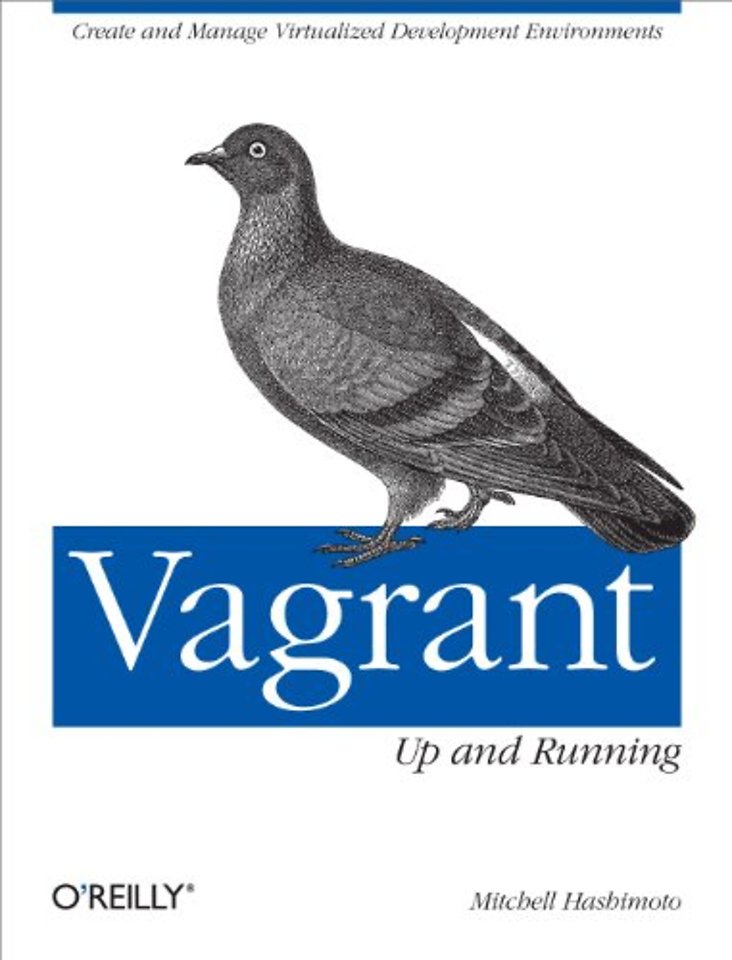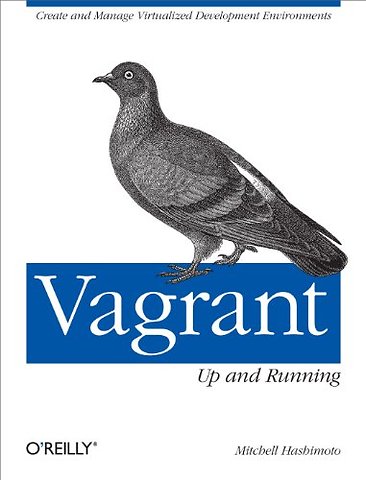Vagrant – Up and Running
Paperback Engels 2013 9781449335830Samenvatting
Discover why Vagrant is a must-have tool for thousands of developers and ops engineers. This hands-on guide shows you how to use this open source software to build a virtual machine for any purpose—including a completely sandboxed, fully provisioned development environment right on your desktop.
Vagrant creator Mitchell Hashimoto shows you how to share a virtual machine image with members of your team, set up a separate virtualization for each project, and package virtual machines for use by others. This book covers the V1 (1.0.x) configuration syntax running on top of a V2 (1.1+) core, the most stable configuration format running on the latest core.Build a simple virtual machine with just two commands and no configurationCreate a development environment that closely resembles productionAutomate software installation and management with shell scripts, Chef, or PuppetSet up a network interface to access your virtual machine from any computerUse your own editor and browser to develop and test your applicationsTest complicated multi-machine clusters with a single VagrantfileChange Vagrant’s default operating system to match your production OSExtend Vagrant features with plugins, including components you build yourself
Specificaties
Lezersrecensies
Inhoudsopgave
Preface;
Conventions Used in This Book;
Using Code Examples;
Safari® Books Online;
How to Contact Us;
Acknowledgements;
Chapter 1: An Introduction to Vagrant;
1.1 Why Vagrant?;
1.2 The Tao of Vagrant;
1.3 Alternatives to Vagrant;
1.4 Setting Up Vagrant;
1.5 Using Vagrant Without VirtualBox;
1.6 Help!;
Chapter 2: Your First Vagrant Machine;
2.1 Up and Running;
2.2 The Vagrantfile;
2.3 Boxes;
2.4 Up;
2.5 Working with the Vagrant Machine;
2.6 What’s Next?;
Chapter 3: Provisioning Your Vagrant VM;
3.1 Why Automated Provisioning?;
3.2 Supported Provisioners;
3.3 Manually Setting Up Apache;
3.4 Automated Provisioner Basics;
3.5 Multiple Provisioners;
3.6 "No Provision" Mode;
3.7 In-Depth Provisioner Usage;
3.8 What’s Next?;
Chapter 4: Networking in Vagrant;
4.1 Forwarded Ports;
4.2 Host-Only Networking;
4.3 Bridged Networking;
4.4 Composing Networking Options;
4.5 NAT Requirement As the First Network Interface;
4.6 What’s Next?;
Chapter 5: Modeling Multimachine Clusters;
5.1 Running Multiple Virtual Machines;
5.2 Controlling Multiple Machines;
5.3 Communication Between Machines;
5.4 Real Example: MySQL;
5.5 What’s Next?;
Chapter 6: Boxes;
6.1 Why Boxes?;
6.2 Box Format;
6.3 Basic Box Management with Vagrant;
6.4 Creating New Boxes from an Existing Environment;
6.5 Creating New Boxes from Scratch;
6.6 What’s Next?;
Chapter 7: Extending Vagrant with Plug-Ins;
7.1 Extensible Features;
7.2 Managing Vagrant Plug-Ins;
7.3 Plug-In Development Basics;
7.4 A Basic Plug-In Development Environment;
7.5 Developing a Custom Command;
7.6 Adding New Configuration Options;
7.7 Adding a Custom Provisioner;
7.8 Modifying Existing Vagrant Behavior;
7.9 Other Plug-In Components;
7.10 Packaging the Plug-In;
Vagrant Environmental Variables;
VAGRANT_CWD;
VAGRANT_HOME;
VAGRANT_LOG;
VAGRANT_NO_PLUGINS;
VAGRANT_VAGRANTFILE;
Vagrant Configuration Reference;
Troubleshooting and Debugging;
IRC;
Mailing List/Google Group;
Professional Support;
Index;
Colophon;
Rubrieken
- advisering
- algemeen management
- coaching en trainen
- communicatie en media
- economie
- financieel management
- inkoop en logistiek
- internet en social media
- it-management / ict
- juridisch
- leiderschap
- marketing
- mens en maatschappij
- non-profit
- ondernemen
- organisatiekunde
- personal finance
- personeelsmanagement
- persoonlijke effectiviteit
- projectmanagement
- psychologie
- reclame en verkoop
- strategisch management
- verandermanagement
- werk en loopbaan

